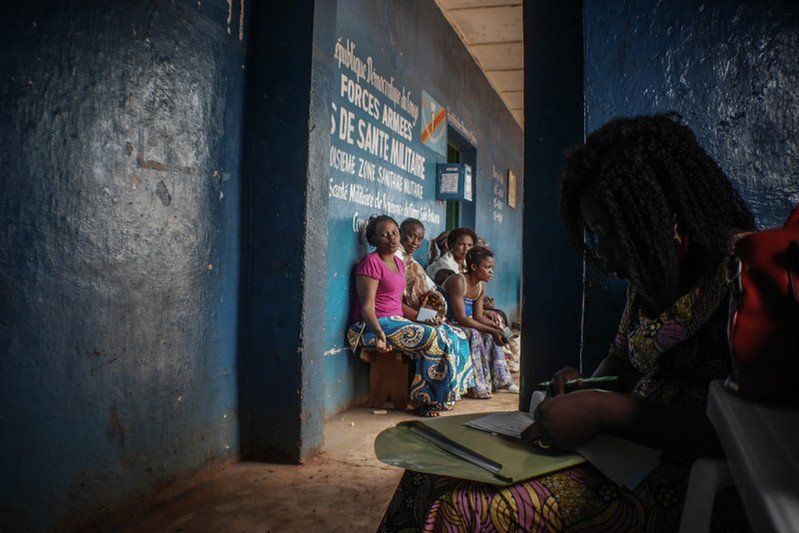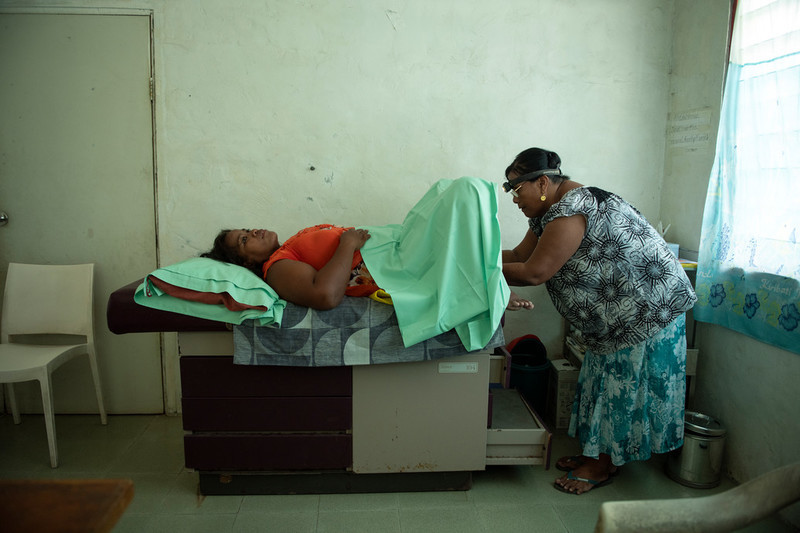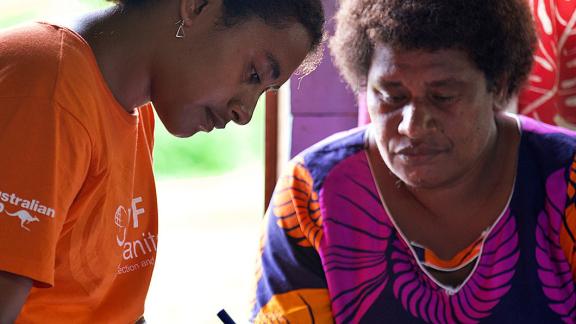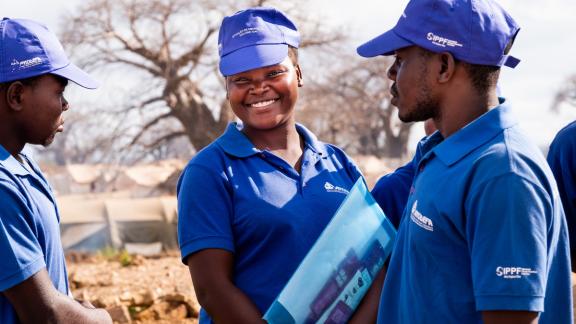In 2021, IPPF responded to 15 crises across 10 countries, reaching a total of 683,136 beneficiaries. IPPF’s localized approach to humanitarian emergencies is led by our Member Associations' response teams. Whenever possible, we deploy local photographers who, like our Member Associations, are present before, during, and after a humanitarian crisis. We spoke with seven international photographers and filmmakers, who shared their experiences and insights on the importance of connecting with the local community and building trust to capture personal, and often intimate, photos and stories.
Read the full interview on Medium.
Disha Arora
Tropical Cyclone Amphan, India
Localization is a crucial part of working in the field and goes beyond knowing the community and speaking the local language; it’s also about being acutely aware of sensitive situations.
“When I am in the field, I question myself; how am I putting my subject in the story? How am I in the best position to tell their stories? I saw a traditionally dressed Hindu woman sitting there with young girls and she’s teaching them about how to use condoms, what is an IUD, and it was delightful to witness. She used household utensils to demonstrate the shape and how to use contraception. It was an overwhelmingly beautiful experience as a storyteller and photographer.”

Masada Vuikadavu
Cyclone Yasa, Fiji
Understanding the local context and being able to effectively communicate sensitive sexual and reproductive health issues - including the provision of counselling to survivors of sexual and gender-based violence - is crucial. Fijian-born photographer Masada worked with the Reproductive and Family Health Association of Fiji (RFHAF) during their response to Cyclone Yasa.
“RFHAF plays a huge and very important role. I witnessed as they broke it down and simplified everything to a point where people just understood it well, and the ability to do it in the local language that made it amazing! It’s a sensitive topic here but they are so experienced that they utilize their knowledge and their skill with the language to put it across in such a way where it’s like, wow!”

Kun Humanity
Tropical Cyclone Seroja, Indonesia
Kun Humanity, part of the Indonesian three-person production team who recently produced a film on IPPF’s response to Tropical Cyclone Seroja, stresses the importance of knowing the local dialect.
“Sometimes when you try to bring the city lingo to these rural areas it feels distant, so we interact in the local dialect to try and explore their true feelings about the situation and the program.”
Kalo Fainu
COVID-19 Response, PNG
Being a female photographer working in some of the most fragile humanitarian settings comes with its challenges. For local photographer Kalo, this was in fact an advantage, which paved the way to capture a special moment where beneficiaries in Papua New Guinea received sexual and reproductive healthcare for the first time.
An 18-year-old mother to young children came to the clinic to receive her first implant, a decision she made so she can return to school having dropped out after the birth of her first child. “She smiled after it was done and there was a real sense of relief. I’m a big believer in localization – it's really important, especially with such sensitive topics and issues that you’re dealing with.”

Raissa Rwizibuka
Nyiragongo volcano eruption, Democratic Republic of Congo
It’s 27 degrees in the Democratic Republic of Congo, and Raissa, a young photographer from Bukavu, has entered the mobile healthcare clinic run by the Association Pour Le Bien-Etre Familial Et Naissance Desirables (ABEF-ND). She is there to film a young internally displaced mother receiving sexual and reproductive healthcare following the Nyiragongo volcano eruption in May 2021.
Raissa’s experience of capturing sensitive and intimate storytelling has led her to believe that “women, and even men, are more comfortable with female photographers. They often say that women are more understanding.”

Hannah Maule-Ffinch
Climate crisis, Kiribati
Having access to some of the most intimate healthcare only comes through gaining trust and ensuring sensitivities and dignity are upheld. During her content trip in Kiribati to capture the effects of the climate crisis on the local community, Hannah shared a moment with a female sex worker.
“She had her first cervical screening provided by the Kiribati Family Health Association (KFHA) - she allowed me to be in there and document what was going on, which is an extremely personal situation. The photo has since won lots of awards and raised awareness.”

Emilie
Burkina Faso
Emilie witnessed first-hand the significant impact of having access to sexual and reproductive healthcare to the most marginalized women in Burkina Faso.
“Tao, a beneficiary, had run away from her home with her family after a terrorist attack. She panned gold to try to make ends meet so she took us to an open-air mine. There were hundreds of people - male on one side and women on the other - sifting gold under the scorching sun, all day long. Back-breaking work that didn’t yet pay enough to feed her family or cover healthcare. She was a beneficiary of the Association Burkinabé pour le Bien-Etre Familial healthcare program and explained how much these services had helped her and her family.”
Watch Emilie’s video here.

when
Subject
Humanitarian








